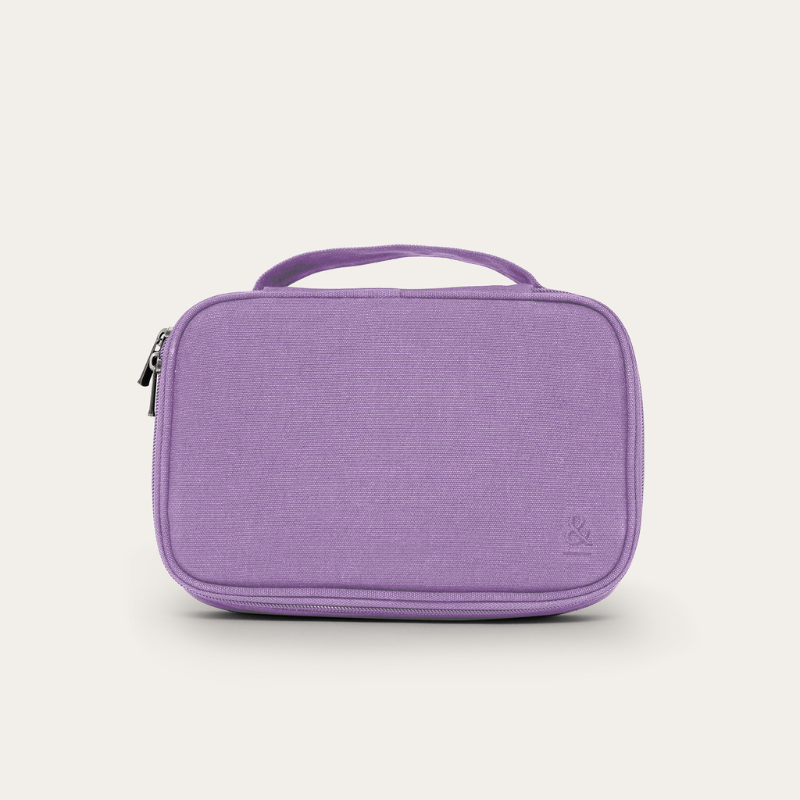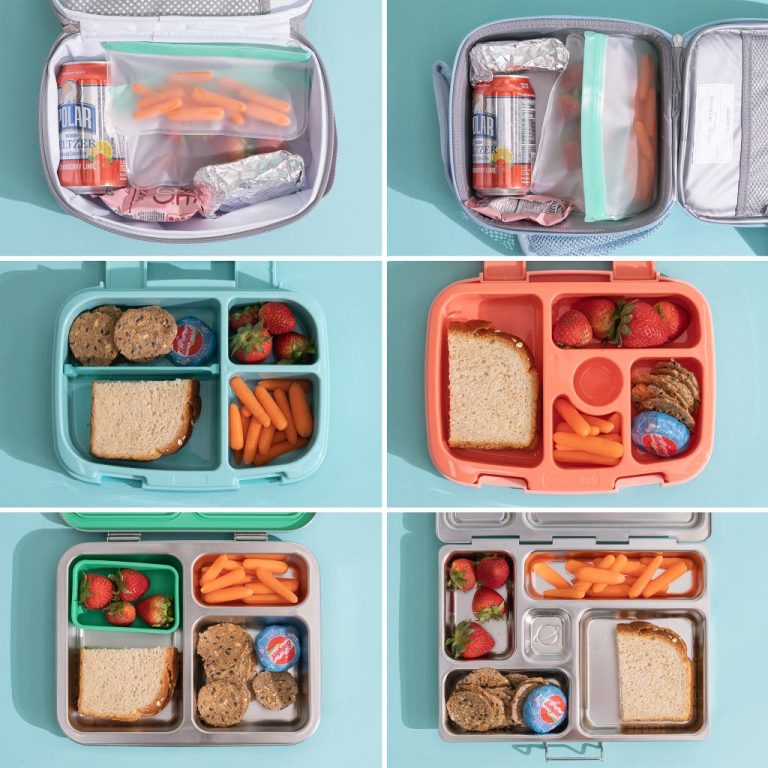Have you ever wondered why your lunch doesn’t taste as fresh by noon? Or perhaps you’re tired of lukewarm drinks and soggy sandwiches?
Choosing the right lunch box can make all the difference in preserving the flavor and freshness of your meals. As you navigate between insulated and regular lunch boxes, it’s crucial to understand how each option affects your food’s quality and your overall lunchtime experience.
Imagine opening your lunch box to find perfectly chilled yogurt or a warm, inviting soup, just the way you packed it. This is the promise of an insulated lunch box. But is it truly better than the regular ones? Dive into this article to uncover the benefits and drawbacks of both types, helping you make an informed decision that suits your lifestyle and keeps your taste buds happy.

Credit: arcticzone.com
Materials And Construction
Choosing the right lunch box involves understanding its materials and construction. These factors influence its durability, insulation, and usability. Both insulated and regular lunch boxes offer unique benefits. Let’s explore their materials and construction to decide which suits your needs.
Insulated Lunch Boxes
Insulated lunch boxes use layers to maintain food temperature. They often contain foam or thermal materials. These layers keep your food hot or cold for hours. The outer layer is usually durable polyester or nylon. This makes the lunch box resistant to wear and tear. Some insulated lunch boxes also have a waterproof lining. This protects your bag from spills and leaks.
Regular Lunch Boxes
Regular lunch boxes typically use plastic, metal, or fabric. These materials are lightweight and easy to carry. Plastic lunch boxes are common and often have secure lids. Metal lunch boxes offer a sturdy, long-lasting option. Fabric lunch boxes are flexible and can fit in tight spaces. Regular lunch boxes are easy to clean and maintain. They are perfect for short trips or meals that don’t need temperature control.
Temperature Control
Temperature control is crucial for lunch boxes. It ensures food stays fresh and safe. Insulated and regular boxes differ significantly in this aspect. Understanding these differences helps you make the best choice for your needs.
Effectiveness Of Insulation
Insulated lunch boxes excel in maintaining temperature. They keep hot foods hot and cold foods cold. This is due to their special materials. These materials trap heat or cold inside. It prevents external temperatures from affecting your food. Insulated boxes often have layers of foam or fabric. This barrier enhances their temperature control ability. It offers a reliable solution for long hours.
Temperature Maintenance In Regular Boxes
Regular lunch boxes lack insulation. They struggle with maintaining temperature. External conditions easily affect the food inside. Hot food cools down quickly. Cold food warms up faster than you expect. Regular boxes are made from simple materials. These materials don’t block temperature changes effectively. They are more suitable for short-term use. Their primary focus is on storage rather than temperature control.
Durability And Longevity
Choosing the right lunch box affects its durability and longevity. Insulated and regular lunch boxes differ in materials and construction. These differences impact their wear and tear resistance. Understanding these aspects helps in making an informed decision.
Wear And Tear Resistance
Insulated lunch boxes often use robust materials like polyester and nylon. These materials resist scratches and minor damage. Regular lunch boxes may use plastic or simple fabric. These materials can wear out faster, showing signs of damage. Insulated boxes usually have reinforced stitching. This adds to their durability compared to regular ones.
Lifespan Comparison
Insulated lunch boxes generally last longer. Their sturdy materials and construction make them durable. Regular lunch boxes might have a shorter lifespan. Their materials can break down with frequent use. Insulated options offer better longevity, saving money over time. Consider how often the lunch box will be used. This affects the lifespan significantly.
:max_bytes(150000):strip_icc()/sea-tier-3-carhartt-insulated-classic-cooler-bag-nsimpson-607-1e216ef90e834726ab407b68f6a3acb9.jpeg)
Credit: www.seriouseats.com
Portability And Design
Choosing between insulated and regular lunch boxes depends on needs. Insulated boxes maintain food temperature, keeping meals fresh. Regular boxes are lightweight and easy to carry. Both designs offer unique benefits for different lifestyles.
When choosing between insulated and regular lunch boxes, portability and design play a significant role. Your lunch box is more than just a vessel for food; it’s a companion on your daily journey. Whether you’re a student, a professional, or someone who enjoys outdoor activities, the right lunch box can make your day more convenient and enjoyable. Let’s explore how size, weight, design, and usability affect your decision-making process. ###Size And Weight Considerations
The size of your lunch box impacts how easy it is to carry. Insulated lunch boxes often come with added bulk due to their thermal layers. These layers help keep your food at the right temperature, but they can also make the box heavier. Regular lunch boxes, on the other hand, are usually lighter. This makes them easier to carry, especially if you’re walking or cycling. Consider how far you travel and how much you’re willing to carry. Is the added weight of insulation worth the trade-off for you? ###Design Features And Usability
The design of a lunch box can influence its usability. Insulated lunch boxes often have additional features like pockets for ice packs, separate compartments, and easy-to-clean interiors. These features can enhance your experience, especially if you like to pack a variety of foods. Regular lunch boxes may focus more on simplicity. They often have straightforward designs that are easy to open and close. Think about how you use your lunch box. Do you need compartments to separate your snacks, or do you prefer a single spacious container? Ultimately, the choice between an insulated and regular lunch box comes down to your personal needs and lifestyle. Consider how each option fits into your daily routine. Which design aligns better with your habits and preferences?Health And Safety
Choosing between insulated and regular lunch boxes isn’t just about style. Health and safety play a crucial role in this decision. The right lunch box helps maintain food quality, ensuring every meal is safe and nutritious. Let’s explore how material safety and food preservation impact your choice.
Material Safety
Material safety is essential for lunch boxes. Insulated lunch boxes often use materials like stainless steel and BPA-free plastic. These materials are generally safe for food storage. Regular lunch boxes might use cheaper plastics. Some of these can leach harmful chemicals into food. Always check labels for BPA-free and food-safe materials.
Safe materials protect your health. They prevent contamination and preserve food taste. Insulated boxes keep temperatures stable. This minimizes the risk of bacteria growth. Regular boxes may allow temperature fluctuations. These fluctuations can lead to spoiled food.
Food Preservation
Food preservation is key for a healthy meal. Insulated lunch boxes maintain food temperature for hours. This is essential for keeping food fresh and safe. Warm dishes stay warm, and cold dishes stay cold. Regular lunch boxes lack this feature. Food might not stay at the desired temperature.
Insulated boxes use thermal technology. This technology reduces the risk of food-borne illnesses. It keeps food fresh until you’re ready to eat. Regular boxes might expose food to external temperatures. This exposure can affect taste and safety. Choose wisely for better health and safety.
Environmental Impact
Insulated lunch boxes help keep food fresh and reduce waste. Regular lunch boxes might need extra packaging, increasing environmental impact. Choosing insulated options can lead to a more sustainable meal packing choice.
When choosing between insulated and regular lunch boxes, understanding their environmental impact can guide you to make a more sustainable decision. The materials and production processes involved in each type can significantly affect the environment. Let’s dive into the specifics to see how each option measures up.Sustainability Of Materials
Insulated lunch boxes often use materials like polyester, foam, and aluminum. These materials can be durable but may not be the most sustainable. On the other hand, regular lunch boxes can be made from plastic or metal, which might be easier to recycle, depending on your local facilities. Consider if the materials are renewable or recyclable. A lunch box made from recycled or recyclable materials can reduce waste and promote a circular economy. Think about the lifespan of the product too. A long-lasting lunch box can minimize the need for frequent replacements, saving resources over time.Eco-friendly Options
If you’re environmentally conscious, look for lunch boxes labeled as eco-friendly. These might be made from biodegradable or sustainably sourced materials. Bamboo lunch boxes, for example, are gaining popularity for their biodegradable nature and renewable sourcing. Reusable lunch boxes are another eco-friendly choice. By reducing single-use packaging, you minimize waste. Also, some insulated lunch boxes offer replaceable liners, which can extend the product’s life and reduce waste. Does your choice support a sustainable lifestyle? Every small decision counts. By opting for an eco-friendly lunch box, you contribute to a healthier planet. You might even inspire friends to make greener choices too. The environmental impact of your lunch box choice may seem small, but it adds up. Consider how the materials and options align with your values. What will you choose next time you pack your lunch?Cost And Value
Choosing between insulated and regular lunch boxes often boils down to cost and value. This consideration is crucial for many buyers. They want a lunch box that fits their budget and meets their needs. Understanding the cost and value of each option helps in making an informed decision.
Price Range
Insulated lunch boxes generally cost more than regular ones. The price reflects the advanced materials used. Insulation adds to the manufacturing cost. Regular lunch boxes are often made from simpler materials. They come with a lower price tag, appealing to budget-conscious shoppers. Yet, prices can vary widely depending on brand and size.
Value For Money
Insulated lunch boxes offer better temperature control. They keep food fresh longer, which can be a valuable feature. For those who carry meals to work or school, this is important. The added cost may be justified by the benefits. Regular lunch boxes, though cheaper, may lack this feature. They still provide a basic function of carrying food. Ultimately, the choice depends on individual needs and lifestyle. Consider how often the lunch box will be used. Think about the type of food usually packed. These factors determine the true value for money.

Credit: seedandsprout.com
User Preferences
When choosing between insulated and regular lunch boxes, your lifestyle and daily habits play a crucial role. Are you someone who likes to enjoy a fresh salad or a steaming bowl of soup at lunchtime? Or do you prefer the simplicity of a sandwich and some fruit? Understanding your daily needs can guide you towards the right choice.
Some people swear by insulated lunch boxes for keeping their meals at the perfect temperature. Others find regular lunch boxes more versatile and lightweight. It’s all about what fits your routine and makes your day easier.
Lifestyle Considerations
Your lifestyle dictates much of your lunch box preference. If you have a busy schedule with limited access to a fridge, an insulated lunch box might be your best friend. It keeps your food fresh throughout the day.
On the other hand, if you enjoy spontaneous lunch plans or have access to a kitchen, a regular lunch box might suit you better. It’s lighter and easier to carry around, which is perfect for those who are always on the go.
Think about your typical day. Do you need your lunch to stay cold or hot for hours? Or is convenience your top priority? Your answer will lead you to the right choice.
User Reviews And Feedback
Reading user reviews can be enlightening. Many users appreciate the durability of insulated lunch boxes. They love how their meals stay fresh, no matter the weather outside.
However, others find regular lunch boxes more practical for their needs. They highlight the ease of cleaning and the variety of designs available. It’s clear that personal preference varies greatly.
What do users say about packing their favorite meals? Is there a clear winner in terms of satisfaction? Diving into user feedback can offer valuable insights into what might work best for you.
Ultimately, the choice between insulated and regular lunch boxes depends on what you value more: temperature control or ease and flexibility. Consider your lifestyle and the experiences of others to make a decision that fits perfectly into your daily routine.
Frequently Asked Questions
Are Insulated Lunch Boxes Worth It?
Yes, insulated lunch boxes are worth it. They keep food fresh and at the right temperature. Ideal for busy individuals, they prevent spoilage and maintain food quality. Easy to clean and reusable, they help reduce waste. Investing in one ensures healthier meals on the go.
Is An Insulated Lunch Box Good For Health?
An insulated lunch box helps keep food fresh and safe by maintaining optimal temperatures. It prevents bacterial growth, reducing foodborne illnesses. Using it ensures healthier meals while retaining nutrients. Choose BPA-free materials for better health benefits.
What Is The Benefit Of Insulated Lunch Bags?
Insulated lunch bags keep food fresh and safe by maintaining temperature. They reduce the risk of spoilage. Portable and convenient, they are eco-friendly alternatives to disposable containers. These bags preserve flavors and nutrients, ensuring meals are enjoyable. Ideal for school, work, or picnics, they provide a reliable food storage solution.
What Is The Best Lunch Box For Keeping Things Cold?
Opt for the YETI Hopper Flip Soft Cooler. It excels in insulation, keeping contents cold for extended periods. It features a durable design, easy portability, and a leakproof zipper. Choose this cooler for effective cold retention during lunch breaks. Ideal for outdoor enthusiasts and daily commuters alike.
Conclusion
Choosing the right lunch box is essential. Insulated lunch boxes keep food fresh longer. They are great for hot and cold meals. Regular lunch boxes are lighter and often cheaper. They work well for short trips. Consider your needs. Think about how long you’ll be out.
Both have their benefits. For warmth, go insulated. For convenience, a regular box might do. Make sure it fits your lifestyle. A good lunch box makes meals more enjoyable. Happy lunching!


